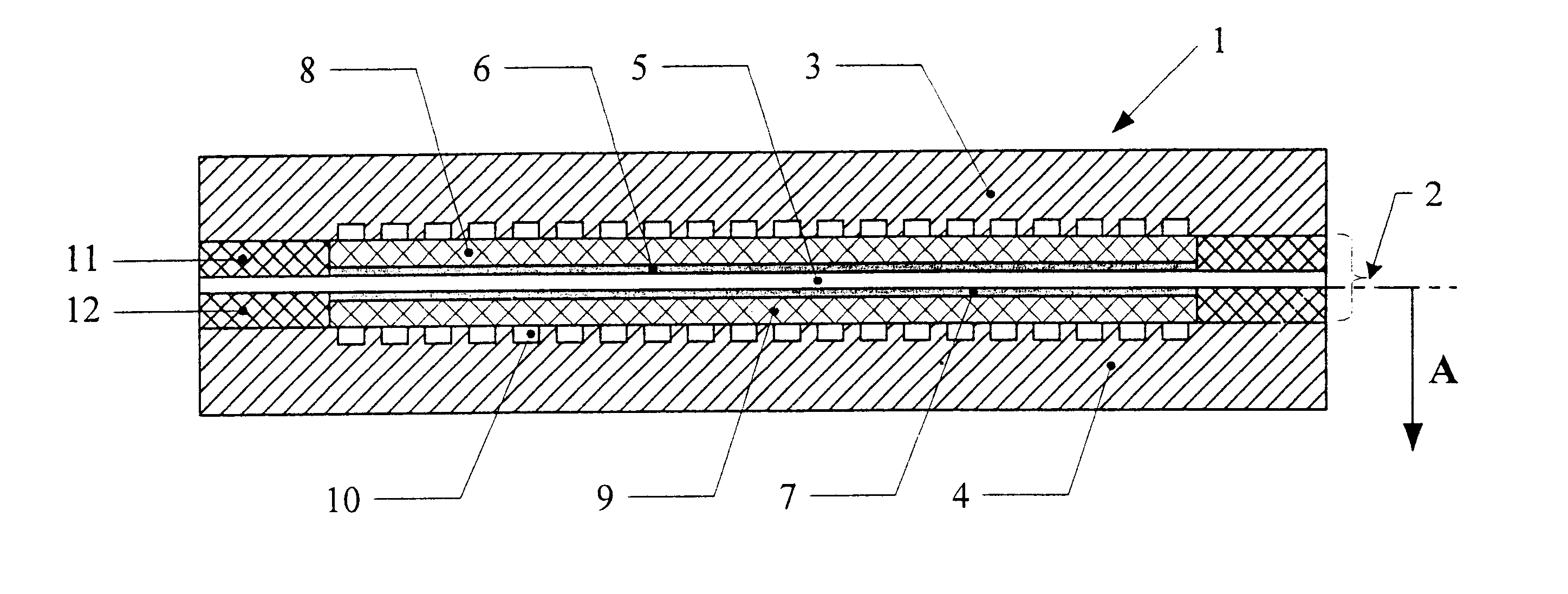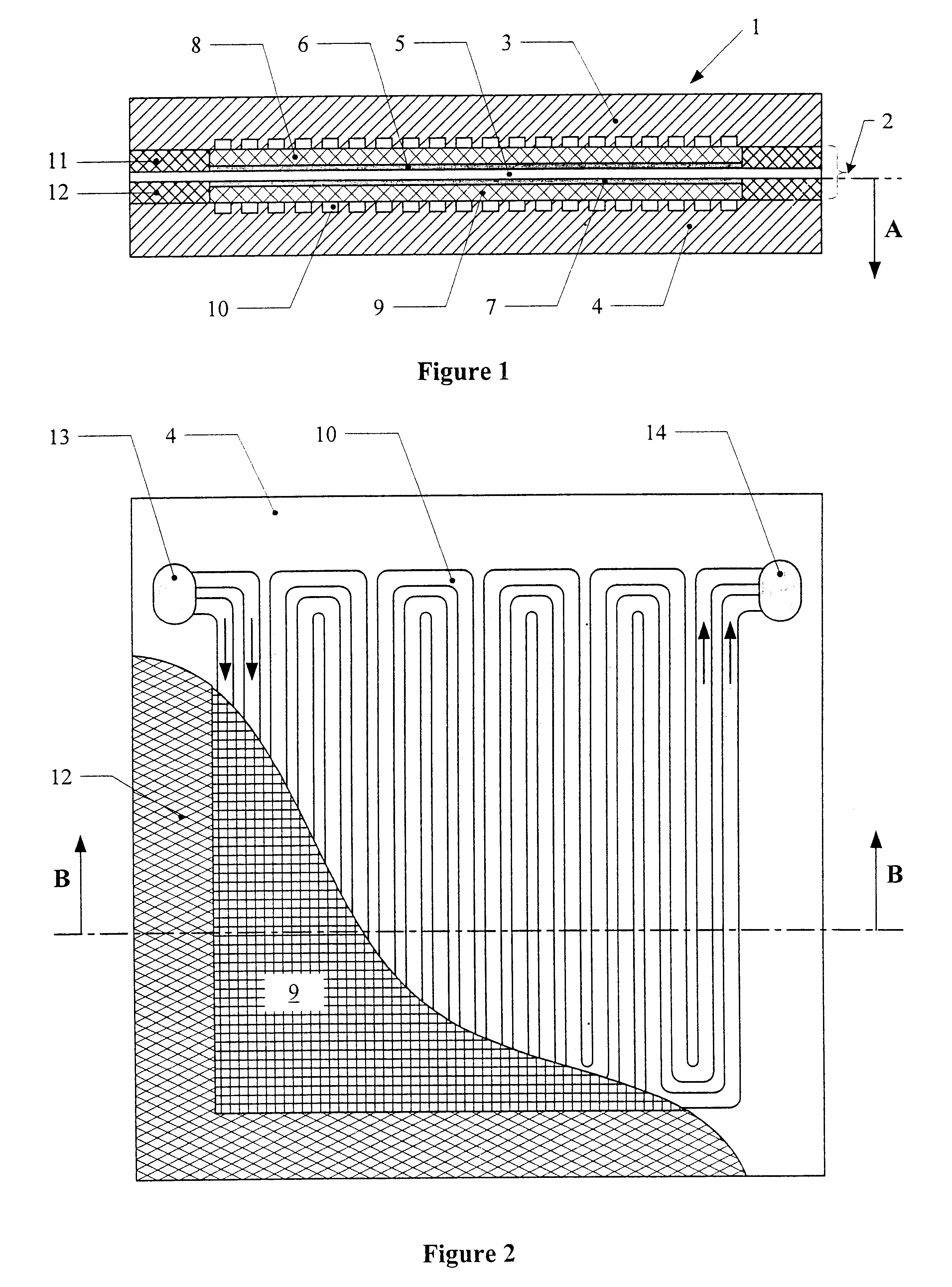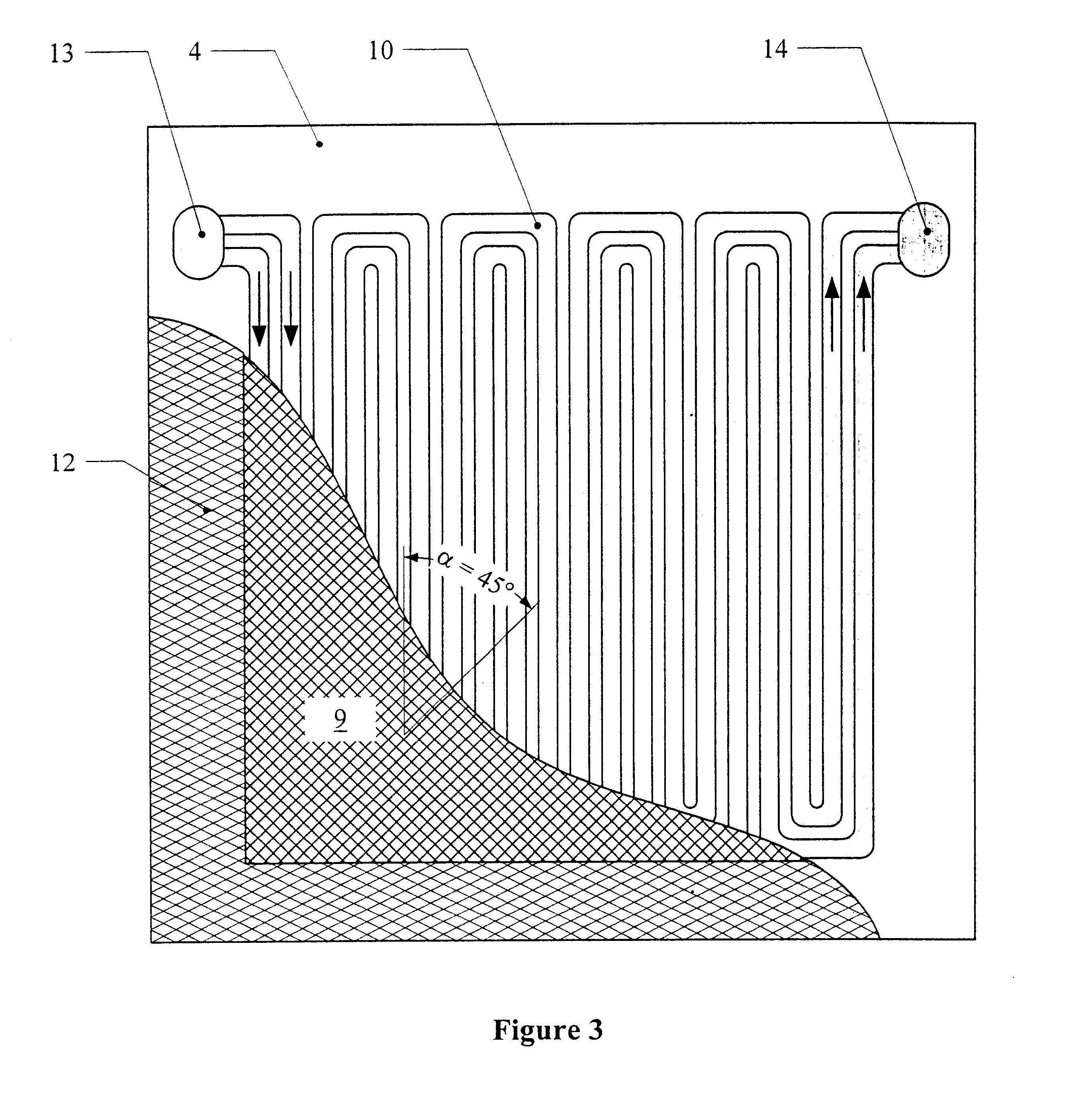PEM fuel cell stack
a fuel cell and stack technology, applied in the direction of fuel cells, propulsion by batteries/cells, electric vehicles, etc., can solve the problems of obstructing the gas transport and impairing the electrical output of the fuel cell, and achieve the effect of improving the transport properties and water content, and further reducing the obstruction of the gas flow in the channel
- Summary
- Abstract
- Description
- Claims
- Application Information
AI Technical Summary
Benefits of technology
Problems solved by technology
Method used
Image
Examples
example 1
Carbon fiber fabric type AvCArb 1071 HCB from Textron Inc. with a weight per unit area of 115 g / m.sup.2 and a thickness of 380 .mu.m was immersed in a suspension of PTFE in water (Hostaflon TF5235, Dyneon GmbH). The material was removed after a few seconds. After allowing the suspension adhering to the surface to drip off, the carbon fiber fabric was dried in a circulating air drying oven at 100.degree. C. The impregnated carbon fiber fabric was sintered in a chamber furnace at 340 to 350.degree. C. for approx. 15 minutes to melt the PTFE incorporated into the structure.
By adjusting the PTFE concentrations in the suspension, carbon fiber papers were produced with a PTFE content of 14.5.+-.0.5 wt. % for the anode and 6.5.+-.0.5 wt. % for the cathode of a fuel cell.
The average thickness of the finished carbon fiber fabric was 330 .mu.m.
These anode and cathode gas distribution layers were incorporated along with a catalyst-coated membrane according to comparative example 1 into a fuel ...
example 2
The carbon fiber fabrics were hydrophobed and sintered as in example 1. The PTFE content was 14.5.+-.0.5 wt. % for the anode and 6.5.+-.0.5 wt. % for the cathode.
These anode and cathode gas distribution layers were incorporated together with a catalyst-coated membrane according to comparative example 1 into a fuel cell test cell with a double serpentine structure. The fabric was oriented such that the cross weave was positioned at an angle .alpha. of 45.degree. to the direction of the gas distribution channels. In assembling the test cell the bipolar plates were screwed together so tightly that the gas distribution layers including the catalyst layer were compressed to the thickness of the seals.
Two Chemglas seals (non-compressible, glass fiber-reinforced PTFE, 0.14 mm thick) with an overall thickness of 0.28 mm were used as seals. Together with a thickness for the catalyst layer of 20 .mu.m, this results in a compression of the gas distribution layers to 36.4% of their original thi...
examples 1 and 2
show an improved output in comparison with comparative examples 2 and 3. There is even a slight output advantage at low and high current densities in comparison to the gas distribution layers coated with a carbon black / PTFE microporous layer as described in comparative example 1. The main advantage in this case, however, is that the complex production of the carbon black / PTFE microporous layer is avoided. Further variations and modifications of the foregoing will be apparent to those skilled in the art and are intended to be encompassed by the claims appended hereto. German priority application 100 42 744.8 of Aug. 31, 2000 is relied on and incorporated herein by reference.
PUM
| Property | Measurement | Unit |
|---|---|---|
| angle | aaaaa | aaaaa |
| angle | aaaaa | aaaaa |
| angle | aaaaa | aaaaa |
Abstract
Description
Claims
Application Information
 Login to View More
Login to View More - R&D
- Intellectual Property
- Life Sciences
- Materials
- Tech Scout
- Unparalleled Data Quality
- Higher Quality Content
- 60% Fewer Hallucinations
Browse by: Latest US Patents, China's latest patents, Technical Efficacy Thesaurus, Application Domain, Technology Topic, Popular Technical Reports.
© 2025 PatSnap. All rights reserved.Legal|Privacy policy|Modern Slavery Act Transparency Statement|Sitemap|About US| Contact US: help@patsnap.com



